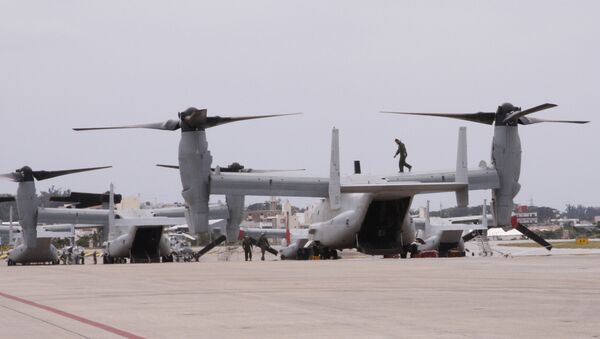The MV-22 "has been relegated to raids rather than service as a critical connector for the sustained amphibious operations envisioned" in operational maneuvers from the sea (OMFTS), according to a defense think tank report.
A key part of the Marines’ promise to project power from the sea to the shore lies in their ability to transfer heavy military gear via the MV-22 Osprey. But the rotorcraft can only carry lightweight internally-transportable vehicles (ITVs). Further, the Marines’ next version of amphibious vehicles is heavier than the machines they are replacing, since they prioritize armor over portability, according to a report from the Center for Strategic and Budgetary Assessments.
To make the most out of the Osprey’s mobility, the USMC "must continue to acquire vehicles and fire support systems small enough to fit aboard the Osprey," the study notes.
— CSBA (@CSBA_) November 15, 2016
The US has "lagged behind" other nations in developing active protection systems (APS) the report found. APS use "kinetic interceptors" to kill incoming rounds before hitting a vehicle. The APS is suggested to be an appropriate "substitute" for cumbersome armor, decreasing overall weight, without skimping on survivability.
Advancing development of light-armored vehicles and renovating current camouflage, concealment, and decoy technologies also offer potential solutions.
ITVs are no longer in production, after failing to gain traction among Marines, though it does have about 411 of the land vehicles, the report notes.





